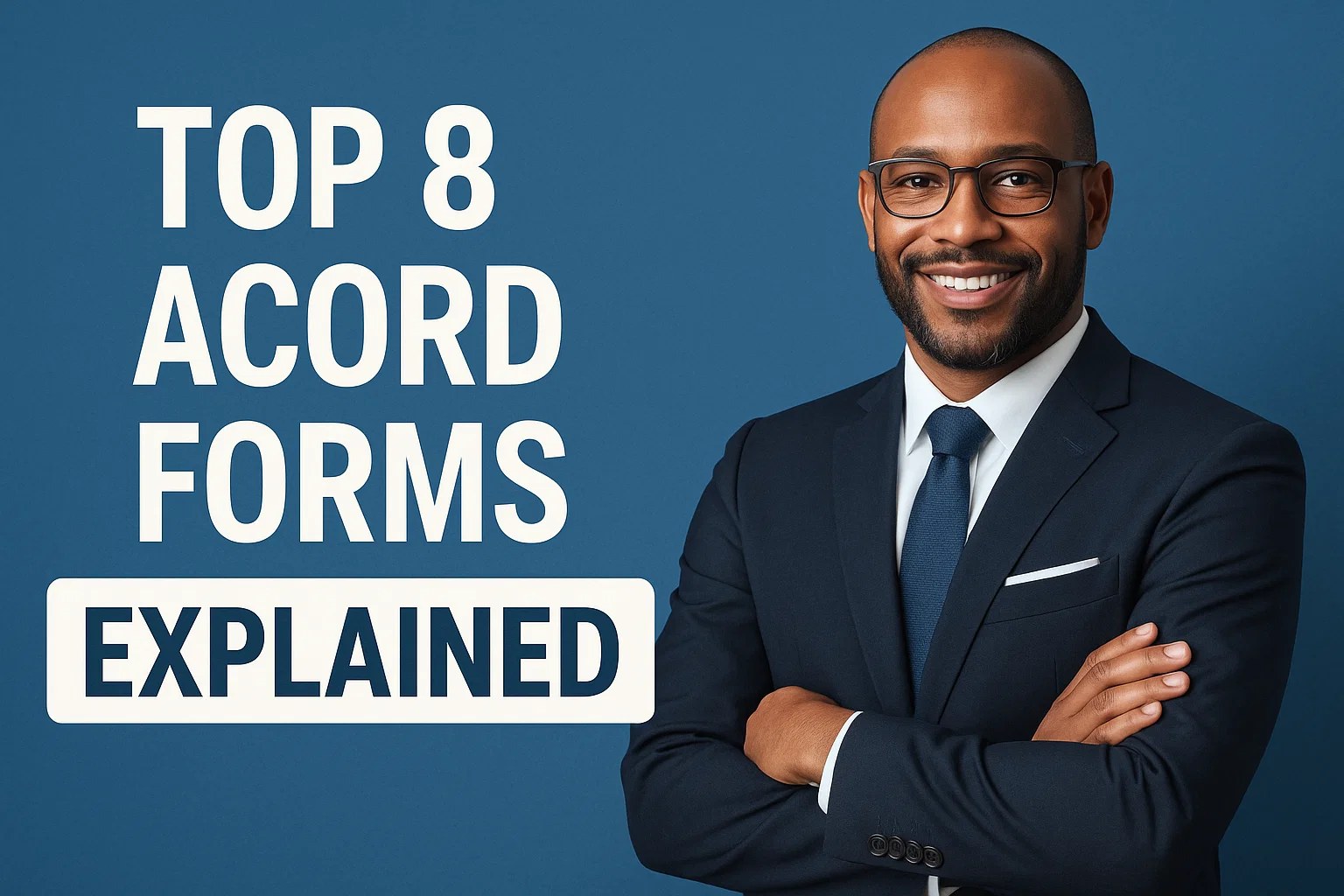Top 8 ACORD Forms Explained – Most Common Insurance Forms

When dealing with insurance, the term that often comes up is Acord forms. If you have ever applied for insurance, requested proof of coverage, or handled claims, the insurance companies, agents, and policyholders use Acord forms to keep information consistent and accurate. These forms play an important role in documents, reducing errors, clarifying communications, and ensuring compliance across various insurance policies, thereby benefiting all parties involved in an insurance transaction.
This guide explains which Acord forms are used most often and why they matter. Below are the 8 most common Acord forms, explaining their purposes and key features in a clear way.
Common Types of The Acord Forms
There are multiple types of Acord forms for different purposes. But some are commonly used in everyday insurance dealings. Take a closer look at that:
(1) Acord 25 – Certificate of Liability Insurance
It is the most frequently requested document, which is used as proof that a business or individual has liability insurance coverage. For example, contractors often provide this form to the client before starting a project, landlords may request it from tenants to confirm coverage, or the client may request it before starting work.
When to Use:
- Vendors working with other companies
- For liability evidence
- Businesses needing coverage verification for contracts
- Contractors providing proof of insurance to clients
Key Features:
- Coverage types and limits
- Policyholder and insurer information
- Effective and expiration dates
- Additional information or notes
(2) Acord 125 – Commercial Insurance Application
The Acord 125 form is a standard application used to apply commercial insurance policies. It collects necessary information about a business, including operations, ownership, prior claims history, and coverage needs.
When to Use:
- Adding or changing coverage types
- Submitting loss history to insurers
- New commercial insurance applications
- Policy renewals
Key Features:
- Business name, ownership, and operation
- Location and property information
- Prior insurance and claims history
- Loss records and risk details
(3) Acord 126 – Commercial General Liability Section
It provides more specific information related to general liability insurance and is used alongside the Acord 125. It helps insurance companies to assess potential risks, limits of liabilities, and the scope of coverage a business requires.
When to Use:
- To update liability limits
- Applying for general liability
- Expanding existing commercial coverage
- Providing underwriters with exposure details
Key Features:
- Claims or incident history
- limits of liability requested
- Products, premises, and operations coverage
- Rating information and classification
(4) Acord 140 – Property Section
The Acord 140 focuses on property insurance details, gathering information related to the insured property, including building construction, location, safety measures, replacement costs, etc. Lenders and insurers most widely use it to determine the property coverage.
When to Use:
- For policy renewals
- Applying for commercial property insurance
- Updating occupancy information or property values
- Adding a new business location
Key Features:
- Business use and occupancy
- Insured property values and limits
- Protective safeguards
- Building construction type
(5) Acord 80 – Homeowner’s Application
It is used as a homeowner’s insurance application. The Acord 80 collects the information about the applicant, the property, past claims, and coverage options.
When to Use:
- Adding endorsements
- Lender requests during mortgage processing
- New homeowner’s insurance applications
- Updated information required for renewals
Key Features:
- Mortgagee and lienholder information
- Occupancy and ownership status
- Requested coverage amount
- Location and construction details
(6) Acord 28 – Evidence of Commercial Property Insurance
This Acord 28 form is required by banks and lenders to verify that a property has appropriate insurance coverage, collecting policy information, effective dates, and coverage limits.
When to Use:
- Real estate transactions
- Lenders may require this form for commercial property loans
- Verifying insurance protection
- Property managers requesting coverage proof
Key Features:
- Insurer details and policy number
- Effective coverage dates
- Deductibles and coverage limits
- Insured property’s legal description
(7) Acord 90 – Personal Auto Application
It is a standardized document for personal auto insurance policies that collects necessary details about the applicant, household drivers, driving history, prior insurance, and vehicles to be covered.
When to Use:
- Adding new drivers
- Verifying prior insurance or claims
- Applying for personal vehicle insurance
- Policy renewals
Key Features:
- Driver and vehicle details
- Accident and claims history
- Garaging and vehicle usage information
- Requested coverages
(8) Acord 35 – Cancellation Request/Policy Release
The Acord 35 is used when a policyholder requests cancellation of an existing insurance policy. The form includes important information, such as the applicant’s name, contact details, insurance information, reasons for cancellation, etc.
When to Use:
- Ending an insurance policy
- Switching provider
- Replacing existing policy
- Non-renewal by policyholder choice
Key Features:
- Policyholder and policy details
- Effective cancellation information
- Reason for cancellation
- Authorization and signature
Best Practices of The Acord Forms
Accuracy is Critical
Confirm all provided information before submission and verify policy number, applicant information, and effective dates.
Time Matters
Complete and submit the required form within the given timeframes and plan for the next renewal deadline.
Documentation Standards
Confirm all provided information before submission and verify policy number, applicant information, and effective dates.
Communication Protocols
Complete and submit the required form within the given timeframes and plan for the next renewal deadline.
